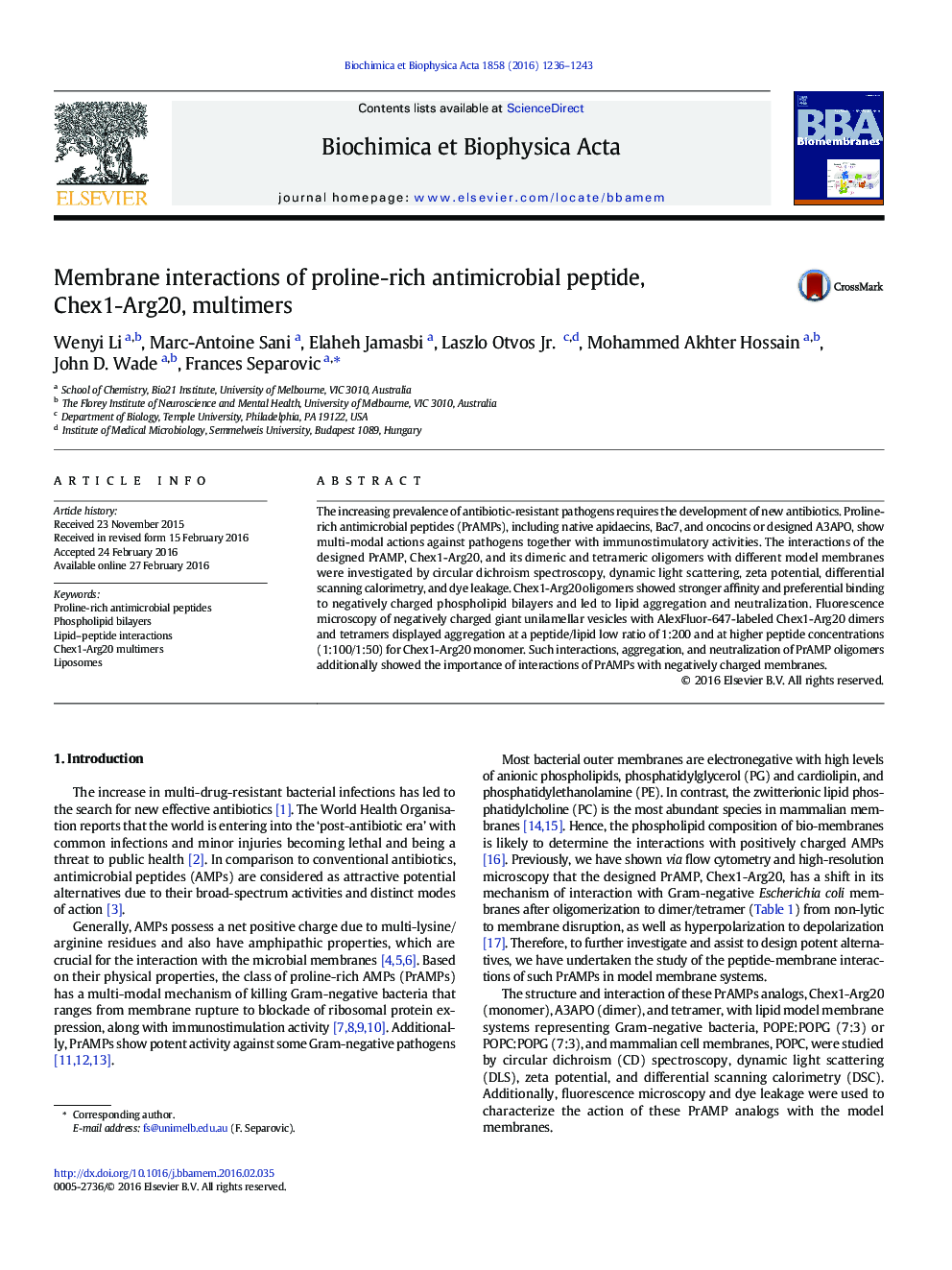| Article ID | Journal | Published Year | Pages | File Type |
|---|---|---|---|---|
| 1943973 | Biochimica et Biophysica Acta (BBA) - Biomembranes | 2016 | 8 Pages |
•Proline-rich antimicrobial peptides (PrAMPs) exhibit different mechanisms in vesicles and live bacteria.•The designed PrAMP, Chex1-Arg20, and its oligomers did not induce dye leakage in model membranes.•Chex1-Arg20 oligomers showed stronger binding to anionic phospholipid bilayers and led to liposome aggregation.
The increasing prevalence of antibiotic-resistant pathogens requires the development of new antibiotics. Proline-rich antimicrobial peptides (PrAMPs), including native apidaecins, Bac7, and oncocins or designed A3APO, show multi-modal actions against pathogens together with immunostimulatory activities. The interactions of the designed PrAMP, Chex1-Arg20, and its dimeric and tetrameric oligomers with different model membranes were investigated by circular dichroism spectroscopy, dynamic light scattering, zeta potential, differential scanning calorimetry, and dye leakage. Chex1-Arg20 oligomers showed stronger affinity and preferential binding to negatively charged phospholipid bilayers and led to lipid aggregation and neutralization. Fluorescence microscopy of negatively charged giant unilamellar vesicles with AlexFluor-647-labeled Chex1-Arg20 dimers and tetramers displayed aggregation at a peptide/lipid low ratio of 1:200 and at higher peptide concentrations (1:100/1:50) for Chex1-Arg20 monomer. Such interactions, aggregation, and neutralization of PrAMP oligomers additionally showed the importance of interactions of PrAMPs with negatively charged membranes.
Graphical abstractFigure optionsDownload full-size imageDownload high-quality image (263 K)Download as PowerPoint slide
